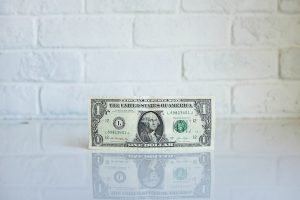Forex trading is a popular investment opportunity that allows traders to profit from the fluctuations of different currencies. One of the most important factors that determine the profitability of forex trading is the cost of trading or the transaction cost. The transaction cost is the amount of money that traders pay to their brokers or dealers for executing their trades. The transaction cost in forex trading is mainly composed of two components: the spread and the commission. In this article, we will explain how much quantity costs forex and how traders can minimize their transaction costs.
The Spread
The spread is the difference between the bid and ask prices of a currency pair. The bid price is the price at which traders can sell a currency pair, while the ask price is the price at which traders can buy a currency pair. The spread is usually expressed in pips, which is the smallest unit of measurement in forex trading. The spread varies from one currency pair to another and from one broker to another. The spread can be fixed or variable, depending on the broker’s policy.
For example, let’s say that the bid price of the EUR/USD currency pair is 1.2000, and the ask price is 1.2005. The spread of this currency pair is 5 pips. If a trader buys 1 lot of the EUR/USD currency pair, which is equivalent to 100,000 units of the base currency (EUR), the cost of the spread would be $5 (5 pips x $1 per pip x 1 lot).
The spread is a significant cost for forex traders, and it can have a significant impact on their profitability. The wider the spread, the higher the transaction cost, and the lower the profitability. Therefore, traders should choose brokers that offer tight spreads to minimize their transaction costs.
The Commission
The commission is another component of the transaction cost in forex trading. Some brokers charge a commission on each trade, while others offer commission-free trading but increase the spread. The commission is usually charged as a percentage of the trade size or as a fixed amount per lot.
For example, let’s say that a broker charges a commission of $7 per lot for trading the EUR/USD currency pair. If a trader buys 1 lot of the EUR/USD currency pair, the cost of the commission would be $7. If the trader buys 10 lots, the cost of the commission would be $70.
The commission is usually charged in addition to the spread, which means that traders should consider both components when calculating their transaction costs. Therefore, traders should choose brokers that offer low commissions or commission-free trading to minimize their transaction costs.
How to Minimize Transaction Costs
Traders can minimize their transaction costs by choosing brokers that offer tight spreads and low commissions. However, traders should also consider other factors, such as the quality of the execution, the reliability of the platform, the range of trading instruments, and the level of customer support.
Traders can also use different trading strategies to minimize their transaction costs. For example, traders can use long-term trading strategies that require fewer trades, which reduces their transaction costs. Traders can also use limit orders instead of market orders to enter and exit trades at specific prices, which reduces their transaction costs.
Conclusion
In conclusion, the transaction cost is an essential factor that determines the profitability of forex trading. The transaction cost in forex trading is mainly composed of the spread and the commission. The spread is the difference between the bid and ask prices of a currency pair, while the commission is the amount of money that traders pay to their brokers for executing their trades. Traders can minimize their transaction costs by choosing brokers that offer tight spreads and low commissions and by using different trading strategies.






